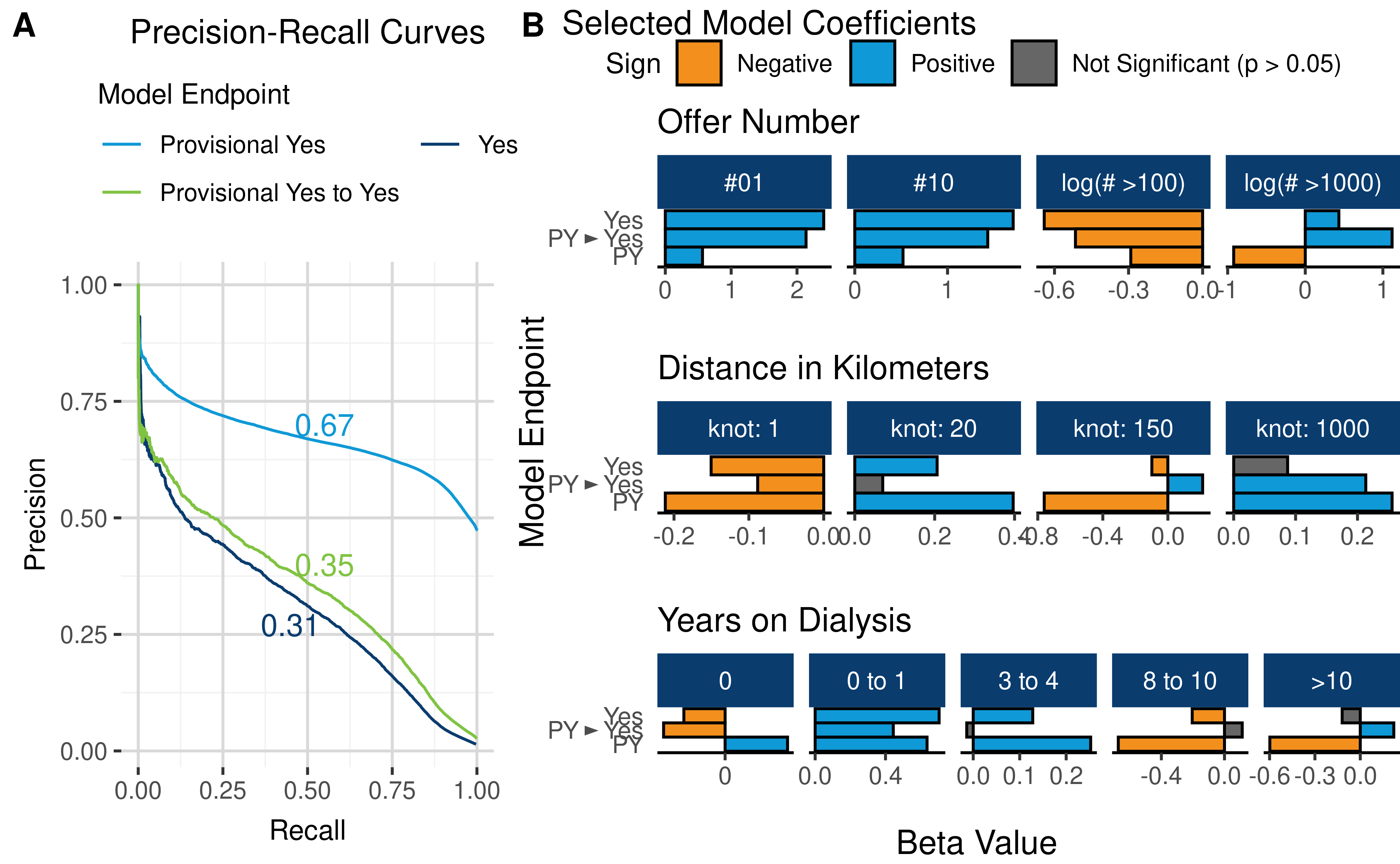Offer Acceptance Models for Various Endpoints: Initial Response, Final Response, and Conversion from Provisional Yes to Yes
C. Martinez, M. Stuart, A. Placona
United Network for Organ Sharing, Richmond, VA
Meeting: 2021 American Transplant Congress
Abstract number: 1296
Keywords: Area-under-curve (AUC), Kidney transplantation, Prediction models, Waiting lists
Topic: Clinical Science » Organ Inclusive » Machine Learning, Artificial Intelligence and Social Media in Transplantation
Session Information
Session Name: Machine Learning, Artificial Intelligence and Social Media in Transplantation
Session Type: Poster Abstract
Session Date & Time: None. Available on demand.
Location: Virtual
*Purpose: Offer acceptance models are routinely used for program evaluation and academic research, but the focus tends to be on modelling the final offer response. We explore different endpoints within the offer process, including modeling an initial response of provisional yes (PY) and conversion from PY to yes, to determine if the models associated with these endpoints vary with respect to prediction performance and significant covariates.
*Methods: We collected donor, candidate, and match run data for kidney donors between 2015 and 2019 with at least one kidney transplanted. We replicated both the offer inclusion/exclusion criteria and the model architecture used by the SRTR for evaluating offer acceptance rates. We then modelled each of the following endpoints: if the initial response was a PY, if a PY was converted to a final yes, and if the final response was a yes. Each endpoint consisted of 4 logistic regression models (one each for all pediatric donors and adult donors stratified by high/middle/low KDRI) using the same covariates as the SRTR models. We compared covariates in each model as well as their predictive performance using a holdout set of the most recent 6 months of donors in the cohort.
*Results: We noted distinct prediction performance across the models (Figure 1A). The final acceptance and PY conversion models had similar precision-recall (PR) curves, but the conversion model yielded higher precision across all recall thresholds. The initial response model had markedly better prediction performance than both the final acceptance and PY conversion models with an area under the PR curve of 0.67 vs 0.31 and 0.35.
Covariates also differed in significance and magnitude between the three models. A selection of covariates beta values are shown in Figure 1B. In particular, we observed that offer number (analogous to sequence number) was relatively less impactful for the PY conversion model, but time on dialysis and distance between donor and candidate hospitals were relatively more important.
*Conclusions: We analyzed the same model architecture across 3 different offer acceptance endpoints. Although some models were similar, each had distinct predictive performances. These distinctions suggest that applications using offer acceptance models may benefit from choosing a model tailored to the application context. Future research in this domain would include evaluating different model architectures and fine-tuning model parameters for each offer acceptance endpoint.
To cite this abstract in AMA style:
Martinez C, Stuart M, Placona A. Offer Acceptance Models for Various Endpoints: Initial Response, Final Response, and Conversion from Provisional Yes to Yes [abstract]. Am J Transplant. 2021; 21 (suppl 3). https://atcmeetingabstracts.com/abstract/offer-acceptance-models-for-various-endpoints-initial-response-final-response-and-conversion-from-provisional-yes-to-yes/. Accessed December 25, 2025.« Back to 2021 American Transplant Congress

